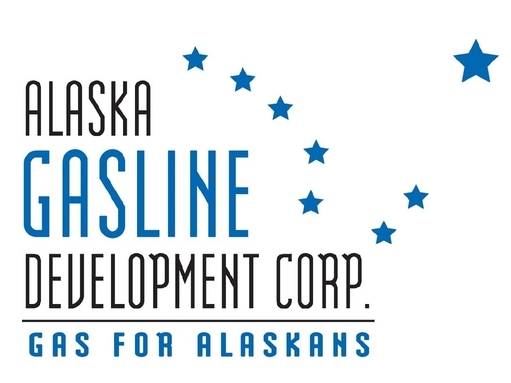The future of Alaska’s Arctic gas pipeline project is unclear after a management shakeup
Incoming Alaska Governor Mike Dunleavy replaced four of seven AGDC members, who in turn fired the corporations president, Kevin Meyer.

The president of the Alaska Gasline Development Corporation is out, fired on Thursday by a board reshaped by Alaska’s new governor.
Keith Meyer lost his job leading the corporation, a state agency that is sponsoring the most recent plan to build a pipeline project that would ship long-stranded North Slope natural gas to markets. The decision came at regular meeting of the AGDC board, but that board was dramatically changed three days earlier when Gov. Mike Dunleavy replaced four of the seven members.
Despite the sweeping changes in leadership, the AGDC remains fully committed to making Alaska’s gas pipeline dreams a reality, said new board member Doug Smith, who was chosen at the meeting to chair the board.
“This may be the most serious job that we undertake. This job is about the next generation of Alaskans,” he said in closing comments at the meeting.
For nearly half a century, Alaskans have tried to find a way to sell the vast reserves of natural gas that lie in the North Slope oil fields. Known reserves in the Prudhoe Bay and Point Thomson fields total about 35 trillion cubic feet, and there is much more natural gas within the hydrocarbon reservoir that is likely to lie in the hydrocarbon basin.
The latest plan is for a liquefied natural gas project, with an 800-mile pipeline from the North Slope to a processing facility at tidewater at Cook Inlet in southern Alaska. China would be the primary market and Chinese institutions would be the financial partners. The plan also calls for off-takes along the line to provide natural gas to Alaska users. The estimated construction cost is $43 billion.
Meyer, an industry veteran who started a three-year contract with AGDC in the summer of 2016, oversaw efforts to build relationships with Chinese institutions considered critical to the pipeline plan’s success. With Meyer as president, the AGDC in 2017 signed a development agreements with the China Petrochemical Corporation (Sinopec), CIC Capital Corporation (CIC Capital), and Bank of China (BOC). Under Meyer’s leadership, the AGDC also achieved supply agreements with North Slope producers and a sales agreement with Tokyo Gas Co. Ltd..
Meyer was paid bonuses of nearly $300,000 for his two years leading the AGDC, on top of a $500,000-a-year salary, Alaska media organizations reported.
Smith told reporters after the meeting that the leadership upheaval should not signal any backtracking in AGDC’s plans to win contracts that will result in construction of a liquefied natural gas project selling product to Asian markets.
“We’re not looking to decrease any progress,” he said. “Our intent is to continue the progress.” The management shake-up should not “in any way detract” from the mandate to provide in-state and export markets with natural gas, he said.
But the degree to which the state will continue paying for AGDC operations was unclear. During the gubernatorial campaign, Dunleavy criticized his predecessor, then-Gov. Bill Walker, for the state money that was going into the project.
At Thursday’s meeting, a planned presentation on expected state funding was postponed. Bruce Tangeman, newly appointed by Dunleavy as the state’s revenue commissioner, told reporters that the governor was still examining the operations of the AGDC, the proper amount of funding for it and the economic viability of the LNG project plan.
“It’s about low-cost energy for Alaskans. It’s about the economics,” Tangeman said. “He’s just interesting in finding out all the economics of it, if it really has legs.”
Potential state funding for the upcoming year’s budget is yet to be determined, he said.
The state will have to make other big decisions soon about its level of participation in the project, Lieza Wilcox, AGDC’s commercial and economics vice president, told the board at the meeting.
Among those decisions: “Is the state of Alaska planning to invest any more equity?” she said. “Once your equity investors are established, it becomes a much more fruitful conversation with potential lenders.”
There have been some important milestones reached, and others are expected to be accomplished in the near future, officials told the board.
The Federal Energy Regulatory Commission is expected to issue a draft environmental impact statement for the project in February, Frank Richards, AGDC senior vice president of program management, told the board. The partial shutdown of the federal government will not change that schedule because FERC is not one of the agencies for which funding is stalled, Richards said.
That draft is expected to be followed by a final EIS from FERC and a record of decision by February or March of 2020 about whether construction of the pipeline will be allowed, “We’re literally a year away from getting that authority from FERC,” he said.
The shutdown does affect a parallel project being sponsored by the AGDC, however. The plan for an Alaska-only gas pipeline — considered a fallback plan in case an export project does not materialize — had been expected to win some key federal approvals this month.
Agencies reviewing the Alaska Stand Alone Project, or ASAP, had issued a final environmental impact statement on that project in June. A joint record of decision was expected imminently from the U.S. Army Corps of Engineers and the Bureau of Land Management, Richards said. Then came the partial government shutdown. “Then all things went quiet,” Richards said.
The BLM is part of the Department of the Interior, which is one of the departments that lacked funding to fully operate.
CORRECTION: This article originally gave an incorrect figure for former AGDC President Keith Meyer. It was $550,000, not $500,000. In addition Meyer was mis-identified as Kevin Meyer in a sub-headline and Revenue Department Commissioner Bruce Tangeman’s name was misspelled. This article has been updated to correct these errors.